Introduction
In the current digital transformation era, government agencies are under pressure to adopt advanced technologies to improve public services. Artificial Intelligence (AI) offers powerful tools to analyze data, automate tasks, and uncover insights, helping tackle complex challenges in the public sector. From better decision-making to personalized citizen services, AI has the potential to transform government operations. However, as highlighted in our previous whitepaper on Data Management in Government Agencies, [1] success with AI depends on having high-quality, accessible, and well-managed data.
This whitepaper builds on that foundation by exploring the key pillars of AI readiness in the federal government. It provides agency leaders with a roadmap for AI adoption, focusing on areas like data infrastructure, workforce development, ethics, and performance measurement. With practical guidance and best practices, this document helps federal executives drive citizen-focused innovation while ensuring AI is used responsibly and effectively.
The Evolving Landscape of AI in the Public Sector
AI is already transforming government operations across various sectors. From detecting tax fraud to improving benefits processing, AI applications are delivering measurable value. The Department of Homeland Security (DHS) is leading the way with pilot programs exploring AI across its agencies.
For example, FEMA is testing generative AI to streamline hazard mitigation planning for local governments. Homeland Security Investigations (HSI) uses large language models to quickly search and summarize data, aiding investigations in areas like child exploitation and human trafficking. CBP uses AI to facilitate screening of goods at the port of entry, streamlining the identification of threats and alerts [2]. Similarly, USCIS has deployed an AI chatbot to handle routine questions and help train immigration officers, allowing human agents to focus on complex cases.
These efforts are yielding positive results, including faster response times, better data analysis, and improved training. Other successes include the Department of Energy’s use of AI for efficient grid management and the FDA’s AI tools that accelerate parts of the drug approval process.
However, challenges remain. Many agencies face issues with poor data quality, a workforce unprepared for AI, and ethical concerns like privacy. Siloed datasets and low AI literacy among federal employees limit progress, while ethical considerations demand careful attention.
Overcoming these barriers requires a coordinated strategy.
Strategic Pillars for AI Readiness
ROBUST DATA FOUNDATIONS
High-quality, accessible, and interoperable data is the lifeblood of AI and the bedrock for developing effective AI models and applications. Federal agencies must prioritize establishing a well-defined data strategy and robust governance framework to unlock AI’s full potential [3]. This includes:
- Data Quality Initiatives: Implementing rigorous data cleansing, validation, and enrichment processes to ensure accuracy and reliability.
- Accessibility Measures: Developing secure
yet accessible data repositories that comply with privacy regulations while facilitating authorized use. - Interoperability Standards: Adopting common data formats and APIs to enable seamless data sharing across agencies, effectively dismantling long-standing data silos.
- Ethical Considerations: Promoting accountability and trust by embedding principles of sound data governance, including accuracy and transparency, throughout the data lifecycle.
By prioritizing these foundational elements, agencies can build a resilient data ecosystem that supports current AI initiatives and fosters future innovations in public service delivery and decision-making.
Our experience in implementing multi-tier data analytics platforms for agencies such as HRSA, FEMA, and USAID underscores our expertise in creating robust data foundations tailored to AI initiatives. Leveraging advanced solutions like data lakes, data lakehouses, data warehouses, and data pipelines, we ensure data infrastructure that delivers integrity, accessibility, and scalability.
CULTIVATING AN AI-READY WORKFORCE
Building a multidisciplinary team with expertise in data science, engineering, ethics, and project management is essential. To achieve this, we propose:
- Implementing targeted upskilling programs for existing employees, focusing on AI fundamentals and domain-specific applications.
- Establishing an internal AI Center of Excellence to facilitate knowledge sharing and best practices.
- Establishing strategic partnerships with academic institutions for continuous learning and research collaboration.
- Developing a comprehensive talent acquisition strategy, including competitive compensation packages, and recruitment strategies designed to attract top AI talent with the necessary skills and experience from a broad range of sources.
BUILDING TRUSTWORTHY AI
AI systems should be designed and implemented with a focus on objectivity, transparency, and accountability. Robust oversight mechanisms and clear guidelines are essential to ensure responsible AI development and use. These processes should include a wide range of perspectives from policymakers, technical experts, and representatives of the public to ensure AI solutions meet the needs and respect the rights of all.
Engagement with key stakeholders throughout the AI lifecycle is crucial for building trust and ensuring the technology’s societal benefit.
SCALABLE AND SECURE AI INFRASTRUCTURE
Technology Infrastructure
Building an AI-ready infrastructure requires agencies to invest in cloud computing, high-performance computing (HPC), and secure data storage solutions. Cloud platforms offer scalability and cost-effectiveness for diverse AI workloads, while HPC clusters enable complex model training and large-scale data processing. Robust data management systems, including data lakes and warehouses, are crucial for ensuring data quality and accessibility. Agencies should also consider edge computing for real-time AI applications and develop Application Programming Interface (API) ecosystems for seamless data sharing.
Overcoming Legacy Systems and Data Silos
While the technologies mentioned above provide the foundational building blocks for AI infrastructure, their effectiveness hinges on the ability to seamlessly access and integrate data from across the agency. The presence of legacy systems and data silos can pose significant challenges to achieving this seamless data flow. As mentioned above, our experience in implementing multi-tier data analytics platforms at agencies like HRSA, FEMA, GSA, and USAID gives us the confidence to deliver solutions that meet the needs of our customers, no matter how complex or challenging. To address these challenges, agencies should consider the following strategies:
By proactively addressing the complexities of legacy systems and data silos, agencies can establish a robust and integrated data environment that maximizes the potential of AI technologies.
To accelerate AI adoption and optimize resource utilization, exploring flexible service models and ensuring stringent cybersecurity measures are equally essential.
- AI-as-a-Service models: To accelerate adoption and reduce costs, explore AI-as-a-Service (AIaaS) models. These provide access to pre-built tools and infrastructure, allowing for rapid deployment without extensive in-house expertise. Options like Machine Learning-as-a-Service (MLaaS) and Natural Language Processing APIs can offer significant benefits. However, agencies must evaluate vendor lock-in risks and ensure compliance with government requirements.
- Cybersecurity measures: Paramount to these efforts is the implementation of comprehensive cybersecurity measures. This includes end-to-end encryption, multi-factor authentication, regular security audits, continuous monitoring, and adherence to standards like the NIST AI Risk Management Framework. Agencies should also adopt privacy-preserving techniques and establish governance structures to oversee AI security throughout its lifecycle, ensuring the protection of sensitive data and AI systems against evolving threats.
 STRATEGIC PARTNERSHIPS FOR INNOVATION
STRATEGIC PARTNERSHIPS FOR INNOVATION
Fostering a robust collaboration ecosystem is crucial for successful AI implementation in government. This involves actively promoting partnerships between government agencies, academia, and industry leaders to facilitate knowledge sharing, technology transfer, and co-creating AI solutions tailored to public sector challenges. Inter-agency cooperation is equally essential, encouraging different government departments to share data and resources and develop common standards for AI implementation. Public-private partnerships (PPPs) are vital, allowing agencies to leverage external expertise, access additional resources, and drive innovation by combining public sector domain knowledge with private sector technological capabilities.
The REI Way: A Phased Approach to AI Implementation
REI Systems advocates for a measured and iterative approach to AI implementation, emphasizing the importance of starting with targeted pilot projects and proofs of concept. The successful FEMADex pilot project at FEMA and its subsequent scaling demonstrates our ability to transition from pilot to full-scale deployment effectively.
Our FEMADex prototype and pilot phase laid the critical functionalities groundwork the system depends on today:
- Integrates AI/ML into the DevSecOps pipeline to identify legacy issues that hinder FEMA analysts from rapidly launching personal or team workspaces on-demand using a combination of cloud-based tools and services.
- Makes data more secure, accessible, and resilient via cloud computing by using the secure FedRAMP-certified Amazon Web Services and Azure Government cloud.
- Provides a centralized hub for FEMA data using Lakehouse architecture and intelligent search tools so that information, dashboards, and reports are easy to find and share across teams.
- Shares information quickly and easily with State, Local, Tribal, and Territories to help disaster responders save lives.
- Serves as a key enabler of the FEMA administrator’s initiative to analyze Agency operations for equitable mission delivery and outcomes.
The following phases outline the REI-recommended systematic process for identifying, evaluating, prioritizing, and implementing AI solutions within the federal government context. This measured approach ensures that AI initiatives are strategically sound, technically viable, and capable of delivering tangible benefits to both agencies and the citizens they serve.
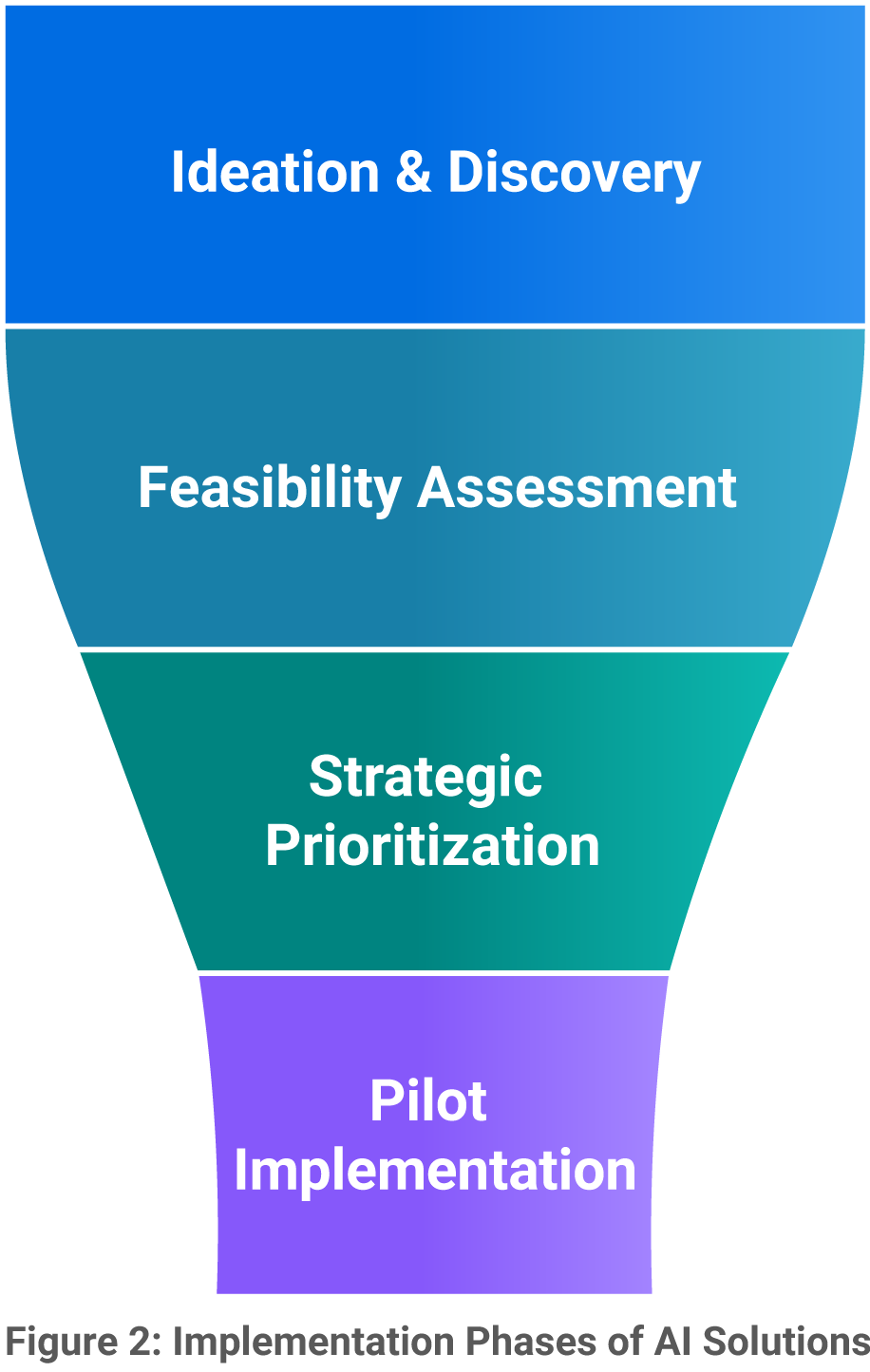
Identify potential use cases: The initial phase involves conducting a comprehensive brainstorming session to generate a wide array of potential AI applications within the agency.
Phase 2: Feasibility Assessment
Evaluate against criteria: The next phase rigorously assesses each use case based on its strategic alignment with agency objectives, technical feasibility, and estimated return on investment.
Phase 3: Strategic Prioritization
Prioritize: The identified use cases are then ranked according to their overall scores, focusing on those demonstrating high strategic value, feasibility, and potential for substantial impact.
Phase 4: Pilot Implementation
Pilot Projects and Proof of Concepts: The final phase involves adopting a measured and iterative approach to AI implementation by initiating targeted pilot projects for the prioritized use cases. These pilots assess the feasibility and potential value of AI solutions before committing to full-scale deployment.
Our experience collaborating with federal agencies such as HRSA, FEMA, and GSA has consistently demonstrated that initiating well-defined, targeted use cases can yield rapid, tangible benefits and foster momentum for broader AI adoption.
Transition to Scaling and Integration
While pilot projects provide valuable insights and validation, successful AI initiatives require careful planning for scaling and integration across the organization. The following strategies can help agencies navigate this critical phase:
- Strategic Roadmap and Phased Implementation: Develop a comprehensive roadmap that outlines the step-by-step process for scaling AI solutions. Start by identifying high-impact use cases and prioritizing them based on strategic alignment and feasibility. A phased implementation approach allows for controlled expansion, minimizing disruption, and ensuring that each phase builds upon the lessons learned from previous ones. Creation of a cost estimate and model creates transparency and manages expectations.
- Robust Data Integration and Interoperability: The effectiveness of AI solutions often relies on the ability to access and integrate data from diverse sources across the agency. Establishing robust data integration and interoperability frameworks, including data standardization, data governance, and API-driven integration, is crucial for enabling seamless data flow and maximizing the value of AI applications.
- Scalable and Secure Infrastructure: As AI solutions expand, the underlying infrastructure must be able to handle increased data volumes, processing demands, and user traffic. Investing in scalable and secure cloud-based solutions, high-performance computing clusters, and robust data management systems is essential for ensuring AI applications’ continued performance and reliability. Monitoring the infrastructure usage is essential to managing ongoing costs and ensuring an effective foundation.
- Change Management and User Adoption: Successfully adopting AI solutions requires proactive change management and communication strategies. Addressing employee concerns and resistance through transparent communication, comprehensive training programs, and highlighting the benefits of AI can foster user acceptance and encourage active participation in the AI transformation journey.
- Continuous Monitoring and Evaluation: Implement a robust system for continuous monitoring and evaluation of AI performance, user feedback, and business outcomes. This allows for ongoing optimization and identification of potential issues and ensures that AI solutions remain aligned with evolving agency needs and priorities.
Establish an AI Center of Excellence
Establishing an AI Center of Excellence (AI CoE) can provide centralized governance, expertise, and support to ensure long-term success of AI initiatives. The AI CoE is the central hub for an agency’s AI transformation. It spearheads the development of a comprehensive AI strategy aligned with the agency’s mission and goals. It actively researches and evaluates emerging AI technologies, ensuring the agency remains at the forefront of innovation. The AI CoE also oversees AI project implementation, providing guidance and ensuring effective execution. It plays a crucial role in upskilling the workforce through AI training and education, fostering a culture of AI literacy. Finally, the AI CoE plays a crucial role in developing and implementing guidelines and governance structures for AI, promoting responsible use and ensuring systems operate with objectivity, transparency, and accountability.
- Strategic Leadership: Spearheads the development of a comprehensive AI strategy that aligns with the agency’s mission and goals, outlining clear objectives and a roadmap for implementation.
- Technology Scouting and Evaluation: Actively researches and evaluates emerging AI technologies, ensuring the agency remains at the forefront of innovation and leverages cutting-edge solutions that meet its specific needs.
- Project Management and Oversight: Provides guidance and oversight for AI project implementation, ensuring projects are executed effectively and efficiently. This includes project planning, resource allocation, risk management, and performance monitoring to ensure successful outcomes.
- Workforce Empowerment: AI training and education play a crucial role in upskilling the workforce, fostering a culture of AI literacy and empowering employees to leverage AI effectively in their roles. Developing balanced scorecards and other data visualization tools fosters a culture of data literacy, empowering the workforce to effectively understand and leverage AI-driven insights.
- Trustworthy AI: The AI CoE develops and implements guidelines and governance structures to ensure AI systems are objective, transparent, and accountable, in alignment with the agency’s mission and commitment to serving the public.
REI’s commitment to innovation and R&D, coupled with continuous exploration of emerging technologies, aligns with the functions of an AI CoE, ensuring agencies remain at the forefront of AI advancements.
Measuring and Evaluating AI Impact
Establishing a comprehensive framework for measuring and evaluating AI implementations is crucial for ensuring alignment with agency goals and maximizing their potential benefits. This involves defining a set of well-defined key performance indicators (KPIs) that directly reflect the agency’s strategic objectives. These KPIs should encompass quantitative metrics, such as cost savings, efficiency gains, and accuracy improvements, and qualitative measures, such as user satisfaction and impact on decision-making processes.
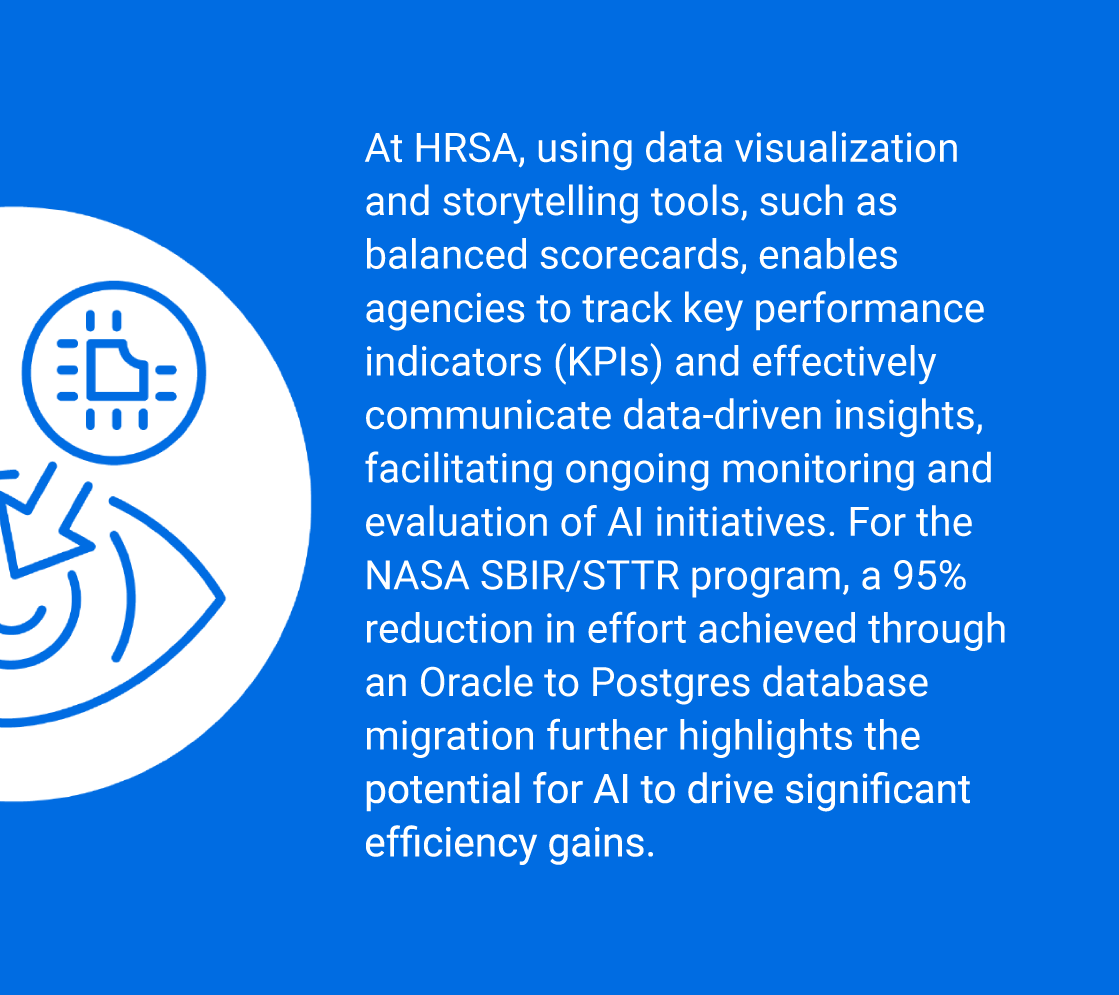
Beyond performance metrics, it is crucial to evaluate the wider impacts of AI implementations on the public and society. Ongoing monitoring and assessment should be conducted to ensure that AI systems are objective, transparent, and accountable, and that they align with the agency’s mission and commitment to serving the public good.
 Conclusion
Conclusion
About the Author

Data Analytics Lead, REI Systems Mr. Krishnamurthy is an accomplished technology leader with 25+ years of experience defining and executing transformative data strategies for government organizations, including Fannie Mae, HRSA, and FEMA.
Contact him at: rkrishnamurthy@reisystems.com
References
- https://www.reisystems.com/data-management-in-government-agencies/
- https://www.dhs.gov/ai/using-ai-to-secure-the-homeland
- https://www.reisystems.com/the-key-to-data-modernization-start-with-data-strategy-and-governance/
Copyright © 2025 REI Systems. All rights reserved.




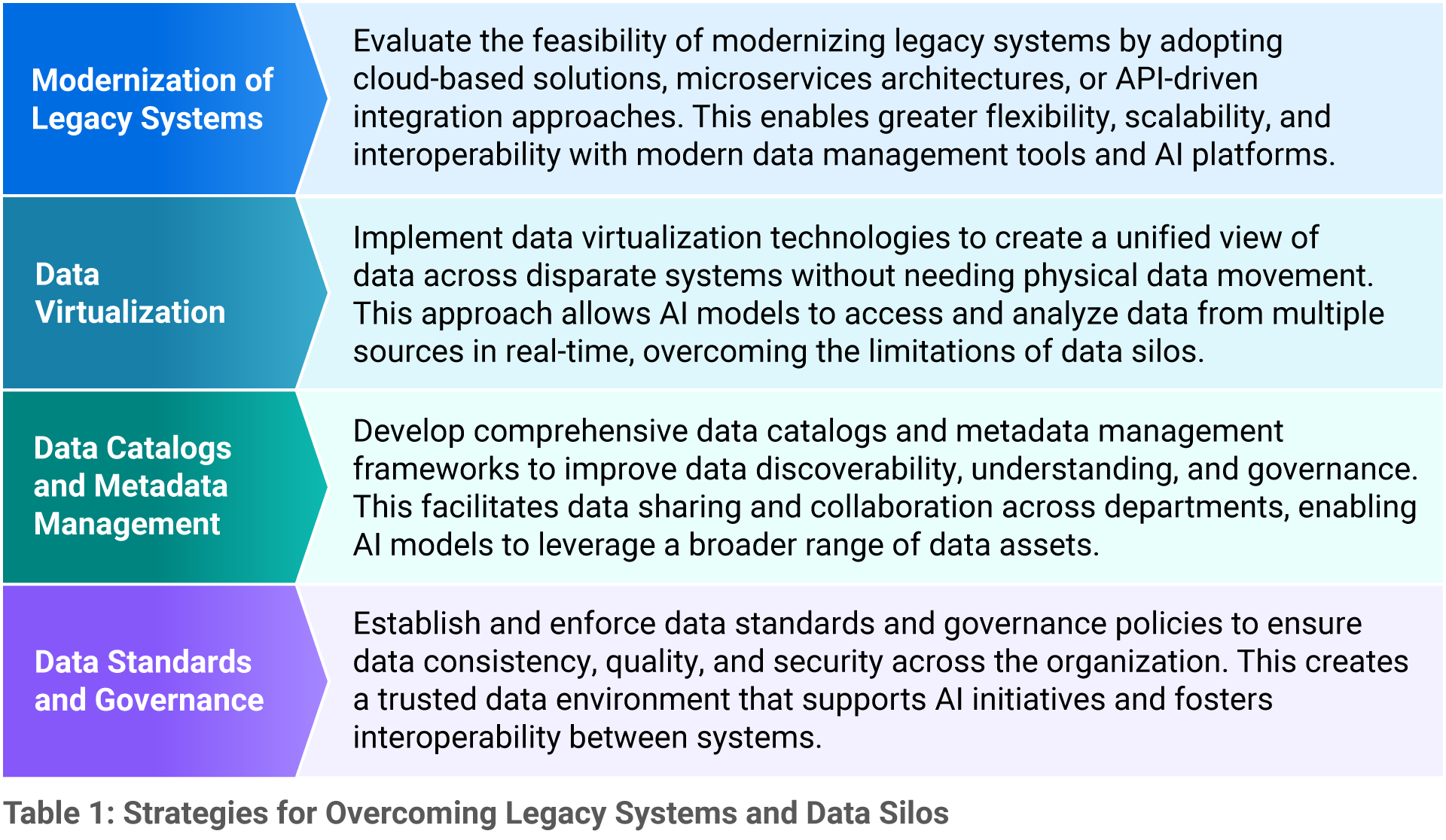
 STRATEGIC PARTNERSHIPS FOR INNOVATION
STRATEGIC PARTNERSHIPS FOR INNOVATION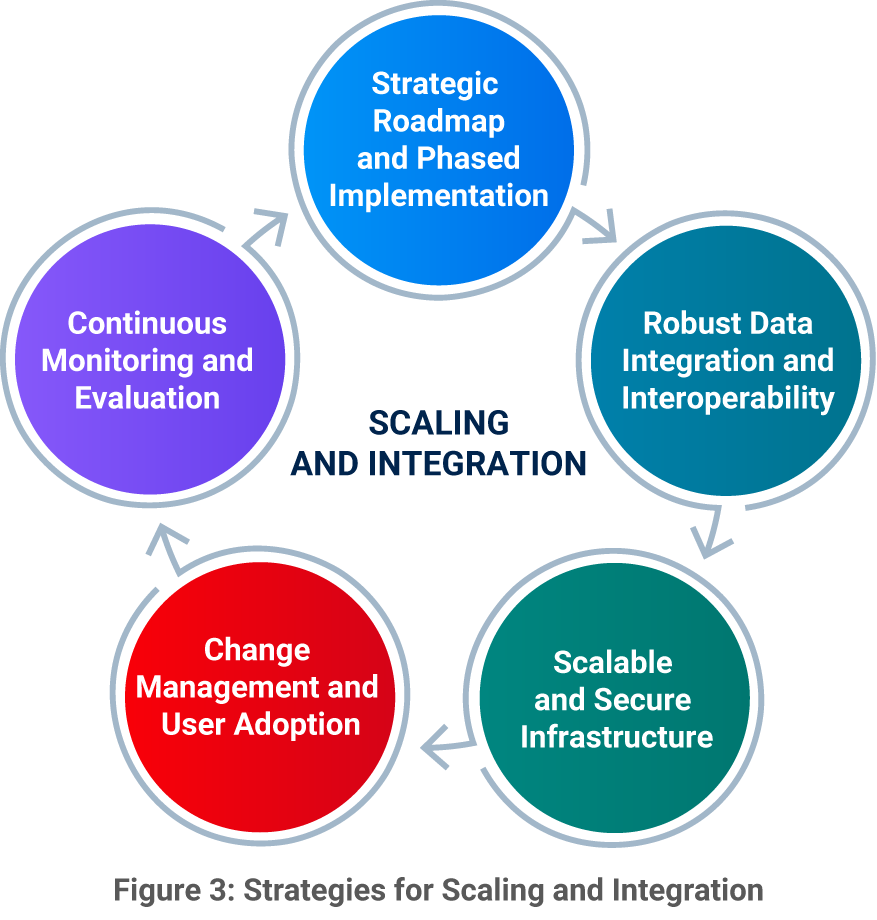
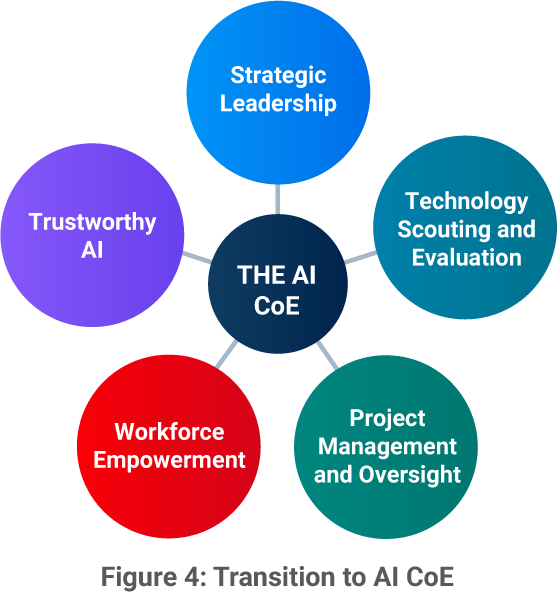
 Conclusion
Conclusion

